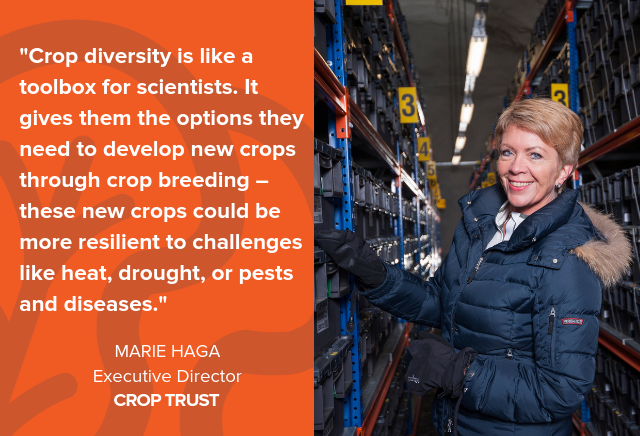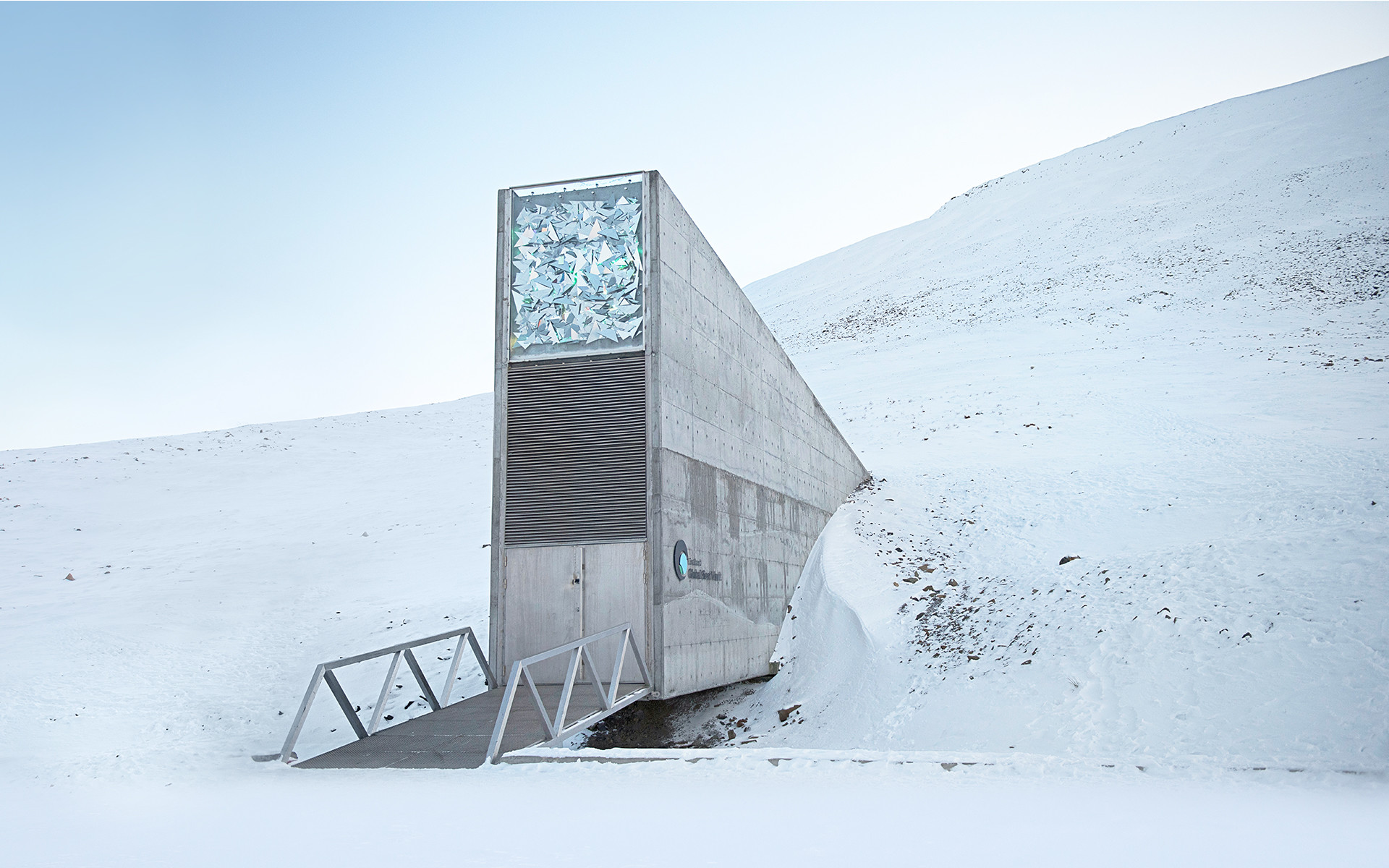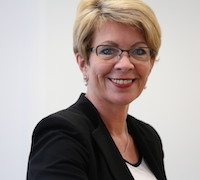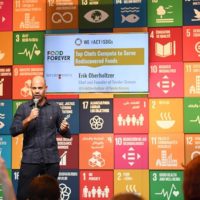
Food+Tech Connect and The Future Market are hosting Biodiversity: The Intersection of Taste & Sustainability, an editorial series featuring interviews with over 45 leading food industry CEOs, executives, farmers, investors and researchers on the role of biodiversity in the food industry. See the full list of participants and read about why biodiversity in food is important here. We are also producing a biodiversity exhibit at The Winter Fancy Food Show, so please stop by to say hello.
Tucked away on an island in the Svalbard archipelago between Norway and the arctic circle, The Svalbard Global Seed Vault, managed by the Crop Trust, is a sort of doomsday vault designed to safeguard the world’s crops and plants in the event of a catastrophe. The Vault has over 1 million seed varieties, and has capacity to store 4.5 million crop varieties. Preserving our seeds is key to ensuring our future. Crop diversity is critical to safeguarding the genetic material needed to ensure crops can evolve in the face of pests and disease, climate change and extreme weather.
Below, we speak with Marie Haga, executive director of Crop Trust, about why it’s important to save our seeds, as well as Crop Trust’s work supporting genebanks, operating the Svalbard Global Seed Vault and raising awareness among politicians, scientists, chefs, eaters and other influencers.
____________________
Danielle Gould: How does your organization define and think about biodiversity?
Marie Haga: We focus on a particular subset of biodiversity, namely crop diversity. This includes all the crops we know and love – banana, rice, wheat and more, plus many that are not cultivated – the so-called wild relatives of our food crops. We believe that all crop diversity needs to be conserved. Why? Well, crop diversity is like a toolbox for scientists. It gives them the options they need to develop new crops through crop breeding – these new crops could be more resilient to challenges like heat, drought, or pests and diseases. If we conserve and share all crop diversity we have the best possible chance to adapt agriculture – and our food system more broadly – to the challenges of the present and future.
DG: What is Crop Trust doing or planning to do to promote biodiversity?
MH: Crop Trust promotes biodiversity through a number of activities, including:
- We support genebanks that conserve crop diversity and make it available to farmers and researchers. We do this both through financial support, and through sharing technical expertise and advice on best practices for genebanks in order to ensure the integrity of their crop collections over the long term.
- We support the operations of the Svalbard Global Seed Vault, which acts as the backup facility for the world’s genebanks. We also provide money and support to developing countries to help them prepare seed shipments and send them to the Seed Vault.
- We also work with our partners to raise awareness of the importance of conserving both crop and livestock diversity – which we sometimes refer to a “food biodiversity” – as outlined in the United Nations SDG Target 2.5. We do this through various ways, including engaging politicians, scientists, chefs and other influencers to use their voices to reach the broadest possible audience.
DG: What does an ideal biodiverse food system look like? How do you measure biodiversity, and when will we know when we’ve arrived at a “good” level of biodiversity?
MH: It could look like many things, but for the Crop Trust, it would be based on the conservation and use of the full range of crop diversity. Our food system needs to experience a series of transformations, and crop diversity underpins many of them.
Whether it’s making food production more sustainable, or ensuring that a world population of 9 billion people by 2050 can afford and access a range of nutritious foods, or whether it’s ensuring agriculture can respond effectively to climate change, even ways to reduce food waste along the food supply chain, crop diversity can help with all of these.
Scientists and farmers can use crop diversity stored in genebanks to breed more resilient crops, to improve the nutritional value of crops and to reduce the damage caused by heatwaves, drought, and pests and diseases. But in order for crop diversity to be useful it needs to be safely conserved and made available to researchers and farmers.
DG: How would you describe the current state of biodiversity? What are the key forces that are helping or hurting biodiversity today?
MH: For our subset of biodiversity, crop diversity, the current state of conservation and use on the one hand, is actually very promising. There are around 2.3 million unique crop varieties conserved in genebanks around the world, and almost 1 million varieties are backed up in the Svalbard Global Seed Vault – the largest and safest repository of crop diversity in the world. That’s a reason for optimism – it shows that there is global interest in and support for this work, and that rapid progress is achievable.
But the bigger picture is more complicated, and there is a lot more to do. There are many genebanks in the world that are located in areas that suffer from earthquakes, extreme weather of political instability. Some suffer from uncertain funding too. In order to ensure all crop diversity is safely conserved, forever, a lot more work – and funding – is needed. The Crop Trust’s endowment fund provides a way for the work of the most important food and agriculture genebanks to be supported forever.
DG: What’s at stake for our society if biodiversity is reduced? Are there examples where a lack of biodiversity has caused problems within an ecosystem or community?
MH: Quite simply, if we lose crop diversity we lose options for scientists and farmers to respond to the agricultural and food system challenges of the present and future. We all depend on these two groups to nourish us.

Svalbard Global Seed Vault // Credit: Crop Trust
DG: What investments need to be made to create a more biodiverse food system?
MH: One option that is most important to us is an investment in the Crop Trust endowment fund. Our goal is to raise the level of the endowment to USD $850 million. This would generate enough interest to cover the operational costs of all the world’s most important food and agriculture genebanks forever. It sounds like a lot of money but it’s absolutely within reach; it’s far less than the annual marketing budget of a multinational food company, or the cost of a new soccer stadium. The value of the Crop Trust endowment currently stands at around USD $300 million, so we’re over one-third of the way there – which is another reason to be optimistic!
DG: What are some of the most important things food manufacturers, chefs, retailers, farmers, and other key parts of the supply chain can do to support biodiversity?
MH: There are all kinds of different activities for different stakeholders. One of the areas in which we’ve been increasingly active is raising awareness of the importance of food biodiversity with audiences that are normally beyond our sphere of influence. World governments have pledged support to the conservation and use of crop and livestock diversity via the United Nations Sustainable Development Goals, which is fantastic. Many of those governments have also committed funding to the Crop Trust endowment fund to help with crop conservation and use. But the general public is often unaware of the issue, or their understanding is patchy. We really want to see this change. To help, we’ve developed a series of events under the banner of the Food Forever Experience. These events give the public a fascinating glimpse into the future of food, encouraging them to try new foods, eat outside their comfort zones and share their experiences. At the events we task top chefs to cook up foods using unusual ingredients that are on the edge of the food system. The idea is to show that the future of food can delicious and exciting if we embrace more diverse ingredients, and to plant the seed for more conversations about the importance of biodiversity. After all, these kinds of conversations can help change culture, and cultural change will be a driving force in achieving a more resilient, sustainable food future.
We should remember that we have a lot of power as consumers to change the food system in ways that help conserve and use biodiversity sustainably. This can be as simple as ensuring our own decisions about what we buy and eat are consistent with the kind of food system we want to see. As consumers of food, it means we all have the opportunity three times a day to send a signal through the food supply chain. However small that signal, it will resonate somewhere in the food system. And as more people send similar signals, supply chains will respond. That can be tremendously empowering to the average person on the street who might be concerned about biodiversity but struggles see how they can have a meaningful impact on conserving it.
Where can consumers and food industry professionals go to learn more about biodiversity issues and what they can do to help?
To learn more about the importance of conserving and using crop diversity, they can visit the Crop Trust website.
To learn more about the importance of crop and livestock conservation and how they feature in the United Nations Sustainable Development Goals, they can visit the website of the Food Forever Initiative.
DG: If we get to a perfectly biodiverse food system, how would that change the typical selection of products we see in a grocery store?
MH: We’d see a lot more variety in grocery stores and supermarkets. We currently derive about 60% of our calories from just four crops: rice, wheat, maize (corn) and potato. While in some ways it’s great that these crops can be so productive and versatile, there’s an inherent tension in our dependence on so few. A pest or disease outbreak to take down wheat; a drought could destroy maize, and the repercussions of those kinds of events could be felt globally. By depending on so few crops we have too many eggs in one basket. We need to spread the risk by embracing new foods – this needn’t be scary – there are many fascinating, delicious and nutritious foods out there that many of us have never had the chance to try.
DG: Are there certain products you would like to see more of in the food industry — either in foodservice or CPG — that would help promote a more biodiverse agricultural system?
Actually, for us, one of the main ‘products’ is greater knowledge. A lot of people don’t realise the breadth of crop diversity out there, and how precarious the state of conservation is in some places.
DG: What is your vision for what a more biodiverse food system looks like in 10-15 years?
MH: Within that timeframe – hopefully much sooner – I would hope that the Crop Trust has reached its goal of raising the level of its endowment fund to USD 850m. I believe this is absolutely within reach, and achieving it would provide an incredible safety net for a food system that is more resilient, more productive and more sustainable. But as well as security, it would provide the tools for more innovation in the agricultural sector, the food sector, and more. It would be the firm foundation for a food future that we should all look forward to being a part of!
Read all of the interviews here and learn more about Biodiversity at The Future Market.
___________________
 Marie Haga, Executive Director of The Crop Trust
Marie Haga, Executive Director of The Crop Trust
Marie Haga joined the Crop Trust as Executive Director in March 2013. She had previously been member and Deputy Chair of the Crop Trust Executive Board. She also currently serves as Board Chair of the Norwegian Peace Research Institute.
Ms. Haga has a background from Foreign Service as a career diplomat, from politics and private sector. She has held various positions in the Norwegian Ministry of Foreign Affaires including to the Norwegian Mission to the United Nations in New York and the Embassy in New Delhi. She was politically appointed and held the position as State Secretary/Deputy Minister in the Ministry of Foreign Affaires 1997-1999.
Ms. Haga has wide experience from politics and served as a Member of Parliament in Norway from 2001-2009. She was political advisor to the Minister for Development Cooperation from 1997-1998. She was Chairperson of the Centre Party from 2003-2008. Ms. Haga has a background from Foreign Service as a career diplomat, from politics and private sector. She has held various positions in the Norwegian Ministry of Foreign Affaires including to the Norwegian Mission to the United Nations in New York and the Embassy in New Delhi. She was politically appointed and held the position as State Secretary/Deputy Minister in the Ministry of Foreign Affaires 1997-1999.
Ms. Haga has wide experience from politics and served as a Member of Parliament in Norway from 2001-2009. She was political advisor to the Minister for Development Cooperation from 1997-1998. She was Chairperson of the Centre Party from 2003-2008. Ms. Haga has held three Ministerial positions: Minister of Cultural Affairs (1999-2000), Minister of Local Government and Regional Development (2005-2007) and Minister of Petroleum and Energy (2007-2008). Marie Haga has held the position as Director for Renewable Energy in the Federation of Norwegian Industries (2009-2011) and as Secretary General of the Norwegian Air Ambulance (2011-2013) – the biggest voluntary organization in Norway. Ms. Haga has been on several boards, including as Chair of the Governing Board of the Norwegian Institute for Nature Research (NINA) (2009-2013) and Chair of the Governing Board of the Industrial Development Corporation of Norway (2010-2013).
Marie Haga has also published three books – one novel and two on Norwegian politics.





